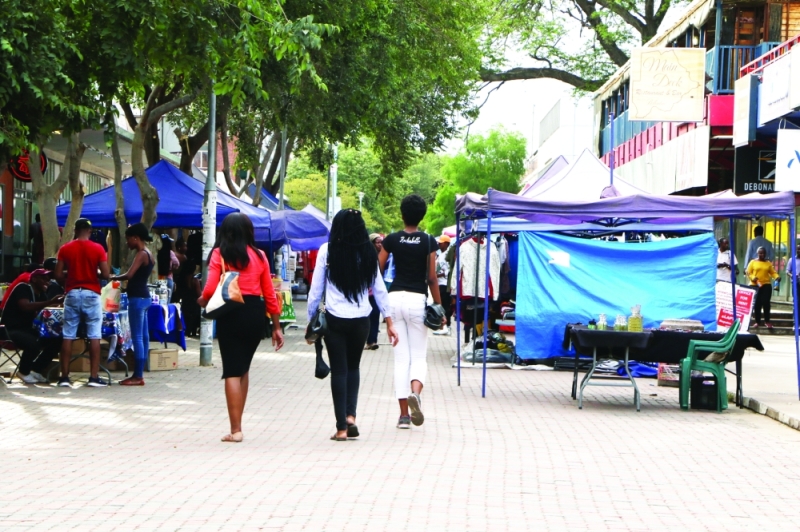Stiff economy turns households off debt
Lewanika Timothy | Monday September 9, 2024 09:48


A recent Bank of Botswana (BoB) survey on household indebtedness found that by December 2023, lending to households had experienced mild growth despite the central bank’s efforts to spur borrowing by maintaining interest rates throughout most of 2023.Credit, a major driver of economic activity and growth, was mildly taken up by households as the pains of a subdued economic environment weighed in on their confidence to leverage on debt.
“The results of the survey show that 80% of banks and 50% of the surveyed microlenders found credit demand to be moderate in 2023, while 70% of banks and 60% of microlenders expect credit demand to be high in 2024,” the BoB found.
The economic context of 2023 was highlighted by a decelerating inflation environment, from the runaway, 14-year record peaks of 2022. In 2023 the easing of supply chain tensions, especially in the fuel and logistics sectors allowed for prices to return to a calm, giving the central bank room to end the interest rate increase cycle. This, in turn, was expected to increase the uptake of credit by microeconomic players, such as households, to spur economic activity.
However, only a four percent growth in debt was recorded amongst households, making the credit environment weak, and slowing down spending in the economy. The slowed-down spending contributed to poor Gross Domestic Product (GDP) figures for the first quarter of 2024 which were already affected by the mining slump and weaker overall private sector output.
“As at the end of December 2023, total household debt was estimated at P61 billion, comprising P54.1 billion (88.6%) commercial bank loans, P6.4 billion (10.5%) microlender loans, and P526 million (0.9%) being hire purchase loans. Compared to the 2022 survey, total household loans grew by 4.6 percent from P58.3 billion. As a percentage of GDP, total household debt was 23.1% in December 2023, from 23.2% in December 2022,” the survey revealed.
In 2023, the local macroeconomic environment was characterised by weaker economic performance, with a real GDP growth rate of 2.7 percent, compared to 5.5 percent in 2022.
Risk aversion did not just blanket households alone, as banks also cut down on what they deemed risky lending to the private sector and instead focused much of their loans on government employees. Of the P54.1 billion in commercial bank lending in 2023, 54% of it was channelled to the “safer” scheme loans and more than 62% was classified as “deduct from source” loans, showing the risk-averse nature of the lending market.
“The survey finds that 51.5% of total household loans are scheme loans, and 67.5% have a deduction from source arrangements. Furthermore, male government employees have the most loans with both banks and microlenders across all sectors of employment.
“Looking at the distribution of loans by employment, banks have the highest amount of loans with government employees, while micro-lenders lend mostly to private sector employees and the unemployed.
“The tendency for commercial banks to lend to customers with traceable and secure sources of income, primarily through scheme loans with deduction-from-source payment arrangements, is a risk management strategy indicative of higher risk-aversion in the banking sector,” the BoB survey noted.
Despite a bleak 2023 credit landscape, the financial sector is bullish on credit uptake in 2024. This comes as economic pressures are expected to loosen, creating room for increased disposable incomes at the household level which will in turn increase the demand for credit in the local market.
“The optimism surrounding household loan performance is due to anticipated increases in household income and increasing economic activity backed by the expansionary fiscal budget,” the survey revealed.
Overall participating financial institutions told the BoB’s researchers that credit demand would increase in 2024, buoyed by improved economic growth prospects and anticipated increases in household income and government spending. Anticipated increases in household earnings are in light of the government’s announcement that it would adjust public sector wages upwards by five percent for the 2024–2025 financial year.
Contrary to the bullish expectation on credit, the first half of the year has defied many optimistic projections about the local economy, with major cramps from the mining sector. The dull economic activity will most likely continue to weigh in on the local credit market as optimism levels regarding the performance of the economy continue to slow down.
Quizzed on whether they would continue with a bullish borrowing stance to households this year, the country’s largest microlender, Letshego Holdings said that they were going to play “a wait and see game” as the macros of the economy remained unfavourable. The group’s CEO, Aupa Monyatsi, further added that there will be a tendency by not just microlenders but investors in the economy to hold investments in an effort to monitor economic developments throughout the year.
“When the economy performs like it is currently performing, there is usually a tendency to play the wait-and-see game,” he said.
“This is to afford investors an opportunity to monitor what will become of the economy first, and that is what we will do.”
